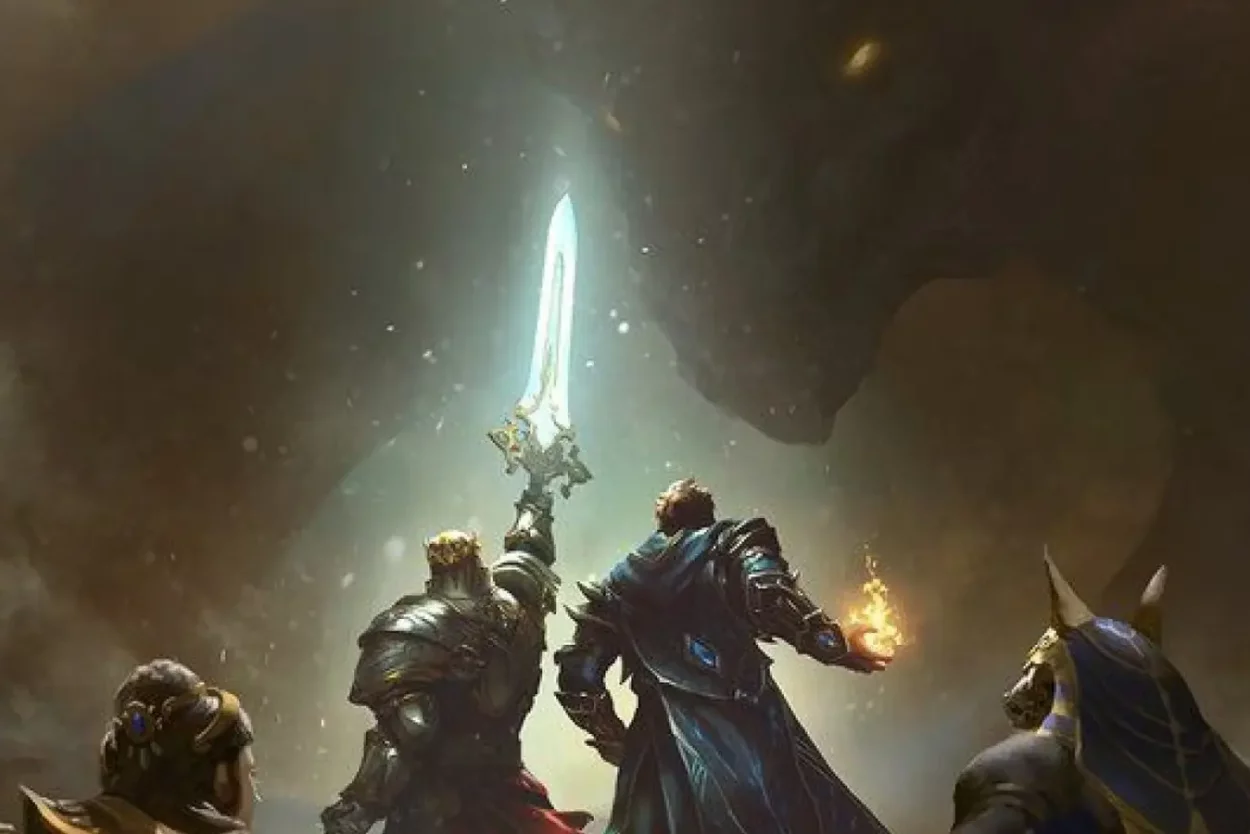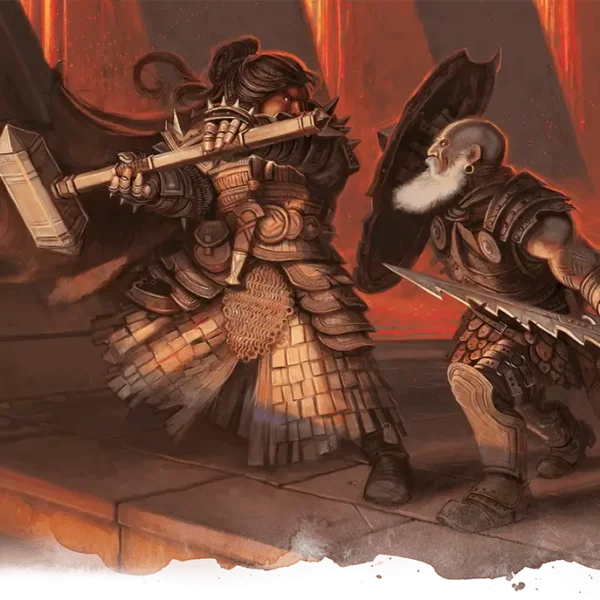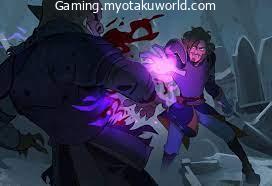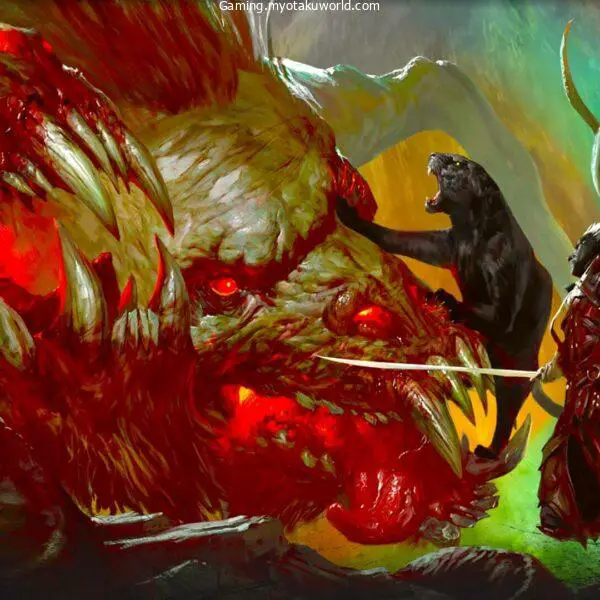Since the earliest editions of Dungeons & Dragons, paladins have represented holy magic and damage.
They have become archetypes of the helpful character in other media thanks to their unique combination of melee combat and the ability to heal or buff allies.
They can serve as tanks in some games, provide assistance in others, and even take the helm in some shows, but role-playing game enthusiasts know them best for their ability to rain down divine wrath.
Although I wouldn’t call myself a Paladin, I have enjoyed playing the role in many games (including but not limited to Dungeons & Dragons, Baldur’s Gate, and Pathfinder) over the years.
Since I’ve been playing D&D for a long time, I’ve mastered the game and am familiar with the special interactions that Paladins have.
Let’s take a look at one of the defining features of Paladins and see how you can put it to use.
Please enjoy this 5th edition Divine Smite Player’s Guide.
Smiting Key Takes
In short:
- It is damage that you can add AFTER a confirmed hit
- Does 2d8 Radiant damage normally
- Consumes Spell slots
- Increases damage based on the level of the spell slot
- Does bonus damage on Fiends and Undead
As such, you can employ it whenever you roll a natural 20 or higher or whenever the DM declares that you score a critical hit. A significant source of additional damage, and a way to keep the spell slot if you miss it.
Smiting Full Explanation
At level 2, Paladins gain access to Divine Smite. To smite an opponent after successfully using a melee weapon attack is an option.
You can use it to deal 2d8 Radiant damage on top of your normal weapon damage for the cost of a single spell slot.
For a total of 3d8 damage, you inflict an extra 1d8 on fiends and undead. For example, a 1st-level spell slot would cast 2d8 damage, a 2nd-level spell slot would cast 3d8, and so on. The maximum is 4d8 levels or 5d8 dice.
This is not a Dungeons & Dragons spell but a magical effect; as such, it can be cast within a sphere of Silence but will fail in an Anti-magic zone because it does not require any components to cast.
You may use this ability as often as you like provided that you have enough available spell slots. On the downside, regaining spell slots for Paladins requires them to take a lengthy rest.
The fact that Half-casters have half the spell slots of full-casters makes spell choice all the more crucial.
In a nutshell, that’s it; in the following section, we’ll talk about the “improved” version, along with other smites that aren’t considered Divine.
Improved Divine Smite
At the eleventh level of Paladin, a character can learn the improved version of Divine Smite. This no longer consumes a spell slot, unlike the regular smite.
To any creature you hit with a melee weapon, add 1d8 Radiant damage. You can use this in addition to your regular Divine Smite, and it costs you nothing.
According to mythology, this happens when your oath is so binding that it imbues you with divine power forever.
It’s worth the Paladin levels despite dealing less damage than a standard divine smite because it’s always on.
Elective Smiting (Alternative Smites)
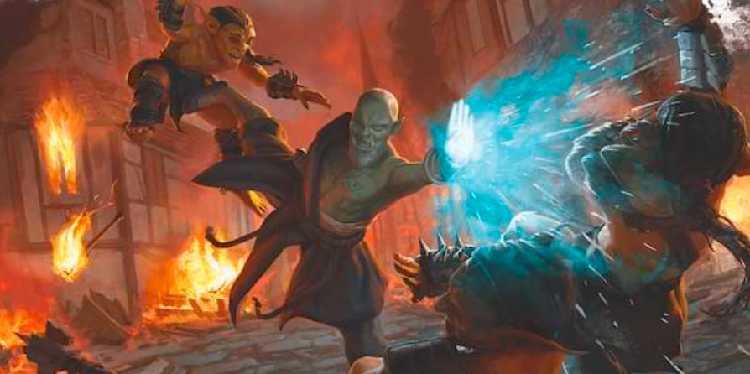
There are, therefore, a plethora of other smite-related options available beyond the Divine Smites.
The smites available in each game and the classes that can use them are listed below.
These are typically spells or abilities that have a cost, but can be extremely effective in the right hands.
Banishing Smite
This whack is the heaviest and, arguably, the strongest of them all. Being a 5th-level spell, it becomes available to Paladins at level 17.
You can use this concentration spell on yourself as a bonus action. It has an hour-long duration and additional effects if you manage to hit a creature within that hour.
Your attack does 5d10 Force damage to the target. If this attack brings the target’s health down to 50 or less, they are instantly expelled without the chance to make a saving throw.
The creature is sent back to its home plane after being exiled, or, if it is native to the plane where the spell was cast, it is placed in a demiplane where it is rendered unconscious for the remainder of the spell’s duration.
Blinding Smite
When cast at level 3, this spell increases the damage done by a melee weapon by 3d8 Radiant. It lasts for one minute, has the concentration tag, and has a bonus action casting time. After dealing one hit, this spell will expire.
An affected creature can attempt to avoid being blinded by making a Constitutional saving throw against you. This saving throw can be retried at the end of the creature’s turn until the blindness ends.
Branding Smite
This is a level 2 concentration spell that requires an extra action to cast. Most smites follow a pattern of being intense for one minute and ending in a smit. This spell adds 2d6 Radiant damage to the target if it hits.
If the target is invisible, it will suddenly become visible, emitting a dim glow in a 5-foot radius and rendering itself uninvisible until the spell wears off.
This means that, even if you score a hit, you still need to keep your mind focused in order to benefit from the glowing effect. Some people think this is the weakest smite, but I think it’s just difficult to apply in certain situations.
Eldritch Smite
Only Warlocks are capable of using Eldritch invocations like this. This ability, along with the Pact of the Blade feature, can only be used by those who have at least five levels in the Warlock class.
You can deal an extra 1d8 Force damage plus another 1d8 per level of the spell slot you expend every time you hit a creature with your pact weapon.
Then, regardless of whether the target is large or small, you can knock it to the ground.
This spell is similar to the Warlock version of Divine smite, but since Warlocks can only cast their spells at full strength, this one is always cast at full strength.
However, since Warlocks have a smaller repertoire of spells than Half-casters, their use necessitates more deliberation.
Searing Smite
The Paladins can use one bonus action to cast this concentration spell of first level. Using this spell will set the target on fire, dealing 1d6 Fire damage.
The target must make a successful Constitution saving throw at the beginning of their turn or take 1d6 fire damage every turn until the spell ends.
If the target makes its saving throw or if any creature within 5 feet of it takes an action to extinguish the flames, the spell is dispelled. The effect is also cancelled if the fire is extinguished by any means.
Staggering Smite
The casting time for this 4th-level verbal concentration spell is one bonus action. If it hits, it deals 4d6 Psychic damage.
A target of this spell must make a successful Wisdom saving throw to avoid being affected.
Until the end of its next turn, it can’t take reactions and is at a disadvantage on attack rolls and ability checks if it fails its save.
Thunderous Smite
The second 1st-level smite spell with the same casting requirements as the others here. The duration of this spell is one full minute of focused thought.
All within a range of 300 feet are subjected to the rumble of thunder, which deals 2d6 points of damage.
Any living creature that takes damage must succeed on a Strength saving throw or be pushed back 10 feet and knocked flat.
Wrathful Smite
Last but not least, we have a 1st-level spell. One minute of concentration and a bonus action are required to cast this spell, which deals 1d6 Psychic damage.
The target must also make a save against Wisdom as an additional effect. If they fail, they fear you without penalty, and if they succeed, they can try to end the spell by making a Wisdom check against your DC.
Smite Comparison
When compared to a regular divine smite, it deals significantly less damage. Each option, however, comes with its own set of side effects, and it’s up to you to decide whether or not those side effects are worthwhile.
In addition, you can combine this smite with a Divine Smite in a chain for even more damage, albeit at the cost of resources.
For me, only Banishing, Blinding, Eldritch, and Staggering Smite are effective enough to justify their mana costs.
Neglecting Charisma in favor of Strength, for example, has no positive impact on your character and can actually make your spell save DC lower.
Smiting Application (Combos)

Now that you know what each smite does, you can put it to good use by following these guidelines for casting Divine Smite.
Assassin
By combining Sneak Attack and Divine Smite, you can deal enormous amounts of damage quickly.
Choose the Assassin Rogue specialty to gain access to the Assassinate feat, which always results in a critical hit when used against a creature that has the Surprise condition.
Because critical hits deal double damage when many dice are rolled at once, it’s possible to wipe out an opponent in the very first round.
Smite Spamming
The way that Warlock spell slots work allows you to start raining down smites with less caution as you gain levels in the class.
Since smites can only be at the highest possible level, your smite will always be at that level; when combined with the slot recovery afforded by short rests, this means you can cast two free Divine smites at that level after each short rest.
The interaction with Divine Smite enables this, as it does not require a Paladin spell slot but rather a generic spell slot.
Consequently, even Warlocks, who have a special system for casting spells, can use them to deal damage. Who knew that Warlocks, those who make deals with the devil, would make such good Paladins?
Proper Smiting Conduct (When to Smite)

However, just because I’m laying out the benefits of Divine Smite and its alternatives doesn’t mean you should use it every chance you get.
Even though Divine Smite is a fantastic ability and among the best low-level features in the game, you shouldn’t neglect all the other aspects of the game in favor of getting in a few extra punches.
Here are my recommendations for when it’s best to smite, when to hold back, and when to use that action or spell slot on something else.
Tip 1: Long-Term Problems
Swipe your sword at anything you suspect will cause trouble down the road. There’s some supernatural entity, like a ghost or a wizard, that’s wreaking havoc on your group.
The longer the game goes on, the more likely it is that the ghosts and the unpredictability of Wizard spell casting will have a negative impact on your party.
These are the best enemies to smite, as defeating them quickly will conserve energy and materials.
Tip 2: Target Priority
It is not uncommon for battles to involve a large number of enemies at once, forcing you and your party to fight against a seemingly impossible odds. Determining which foe can be reached first is crucial in this situation.
Defeating a commander who is in charge of a group of troops could cause a great deal of chaos within the ranks.
Someone in the back, like a strategist, would be a poor target because you’d have to abandon the rest of your team.
Tip 3: Emergency Situations
When trying to push a puzzle into place or decipher ancient celestial texts, it is often necessary to use spells rather than slots.
It’s best to do what your allies in the party either can’t or do poorly, even if they’re still fighting.
You can deal a lot of damage, but so can your Fighter or Barbarian.
When the situation calls for it, your action and spell slot to heal could be the difference between life and death for your cleric.
Tip 4: Delegate Roles
Make sure everyone in your group has a complete understanding of your capabilities and limitations.
It may seem like a good idea to have a team made up entirely of fighters, but that will leave you weak in social situations and when you need to use some creative casting to solve a problem.
If the goal of the campaign is to start a fight and stay in it until the end, then by all means.
FAQs
Can You Divine Smite Multiple Times?
Indeed, you can. If you have enough spell slots left, you can smite every time you score a hit.
CAN DIVINE SMITE MISS?
Absolutely not. To use divine smite, you must first successfully land a hit rather than launch an attack. The only targets immune to the damage of divine smite are illusions and creatures with radiant damage immunity.
IS DIVINE SMITE OVERPOWERED?
What you should do is context-specific. It’s great for one-on-one fights, but paladins only have so many smites to use each day, so they need to be careful with how they’re used. With enough encounters in a day, divine smite can be balanced out. Paladins can only regain their spell slots after a long rest.
